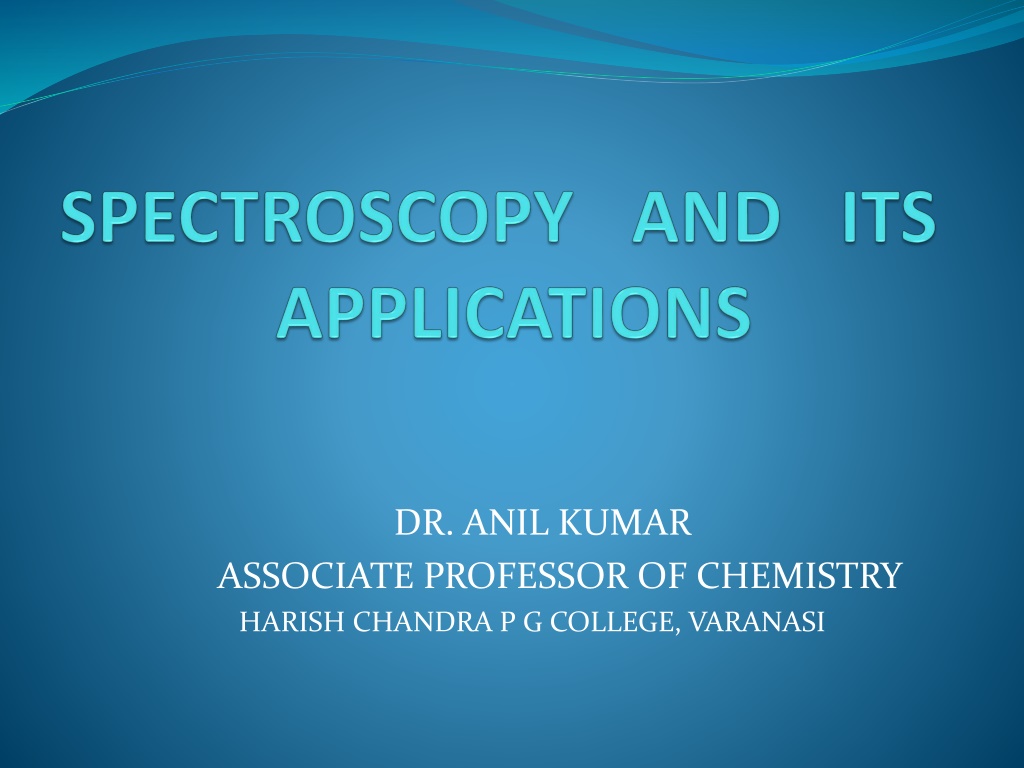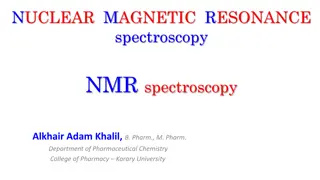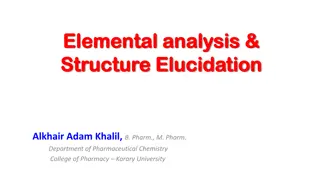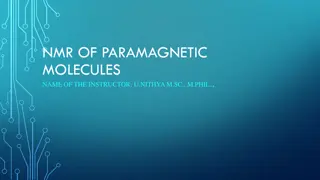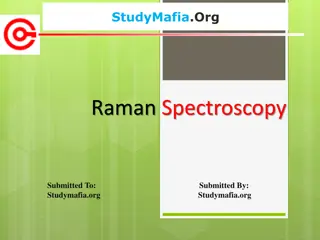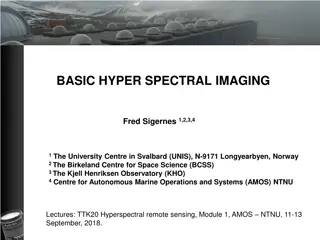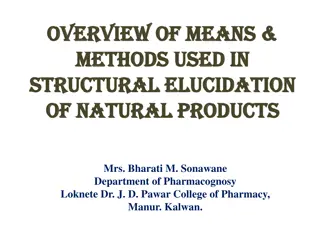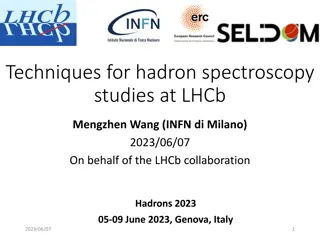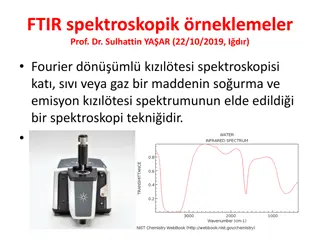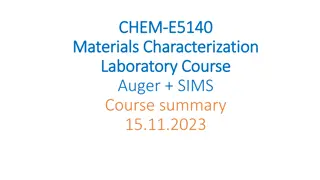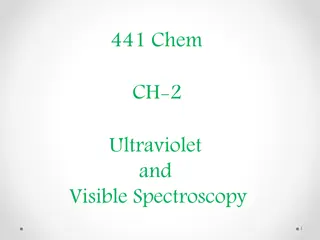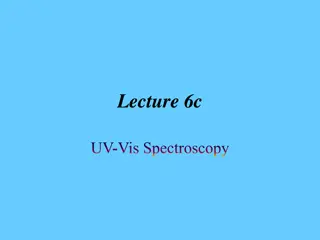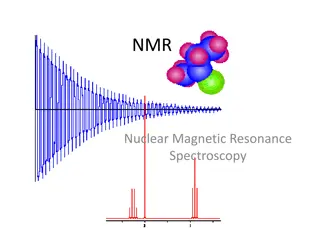Structural Elucidation of Chemical Compounds Using Spectroscopy Techniques
This presentation discusses the various types of spectroscopy techniques such as UV-Visible, IR, Raman, NMR, and others used for elucidating the structure of chemical compounds. It covers the identification of molecule shapes like AB2, AB3, and AB4, with a focus on linear and non-linear structures. The presence of certain branches in Raman and IR spectra indicates the nature of the molecule. Examples of CO2 and N2O molecules illustrate how spectroscopy helps determine molecular symmetry and shape.
Download Presentation

Please find below an Image/Link to download the presentation.
The content on the website is provided AS IS for your information and personal use only. It may not be sold, licensed, or shared on other websites without obtaining consent from the author. Download presentation by click this link. If you encounter any issues during the download, it is possible that the publisher has removed the file from their server.
E N D
Presentation Transcript
DR. ANIL KUMAR ASSOCIATE PROFESSOR OF CHEMISTRY HARISH CHANDRA P G COLLEGE, VARANASI
It is a tool for elucidation of structure of chemical compounds. There are so many types of spectroscopy such as UV-Visible spectroscopy IR spectroscopy Raman spectroscopy NMR spectroscopy Rotational or Microwave spectroscopy ESR spectroscopy Photo acoustic spectroscopy Auger spectroscopy
Identification of shape of AB2, AB3and AB4molecule. AB2type molecule: The structural information requires whether such molecules are linearor non linear. If linear whether symmetrical B-A-B or asymmetrical B-B-A The nature of Raman and IR spectra provide sufficient information regarding structural aspect of molecule. The presence of PR branch indicates that molecule is linear
It possesescentre of symmetryor not. It can be decided by the rule of mutual exclusion principle. Wave no cm-1 Vibration Raman IR Symmetric stretching active Inactive 1330 Bending Inactive Active(PQR) 667.3 Asymmetric stretching Inactive Active(PR) 2349.3 CO2molecule is linear It is indicated by the presence of PR branch in IR spectra.
It is also evident that no vibration is simultaneously Raman and IR active. The rule of mutual exclusion principle shows that CO2 molecule has centre of symmetry. Nitrous oxide N2O wavenumber cm-1 IR Raman 589 Active strong PQR - 1285 Active strong PR Active strong polariosed 2224 Active strong PR Active strong depolarised The presence of PR branch indicates that N2 O molecule is linear.
It does not have centre of symmetry. Atleast two vibrations are simultaneously IR and Raman active. The probable structure is: N N O
AB3 type molecule: Six fundamental vibrational modes 3 N - 6 = 3 x 4 - 6 = 6. Some of these are degenerate because of symmetry of molecule. For symmetric, planar and pyramidal one stretching and one bending mode are doubly degenerate. For planar AB3molecule- One vibration is Raman active One vibration is IR active Two vibrations are both Raman and IR active. The symmetric bending mode is Raman inactive Because it causes no change in polarizabilityof molecule.
Pyramidal AB3molecule: All vibrationsare Raman as well as IR active. They causes change in both dipole moment as well as polarizabilityof molecule. NO3planar Raman ClO3pyramidal Raman IR IR 690 cm-1 680 cm-1 450 cm-1(depolarised) 434 830 cm-1 610 cm-1(polarised) - 624 1044 cm-1 940 cm-1(depolarised) - 950 1355 cm-1 1350 cm-1 982 cm-1(polarised) 994
Non symmetric AB3molecule In this case more than four frequencies/vibrations have been observed ClF3has a non symmetricAB3structure. It show six strong absorption in IR spectrum. Some of these also appear simultaneously in Raman spectra. Thus the molecule is neitherplanar nor pyramidal. It has T shaped structure.
Nucleus with odd atomic number or an odd mass number has a nuclearspin Itcan beobserved by NMR spectrum. Forexample1H,13C,15N,19F,31P. Itcan be studied by NMR. There are twospin state Alpha spin state I = +1/2 Betaspin state I = -1/2 spin state has higherenergy.
